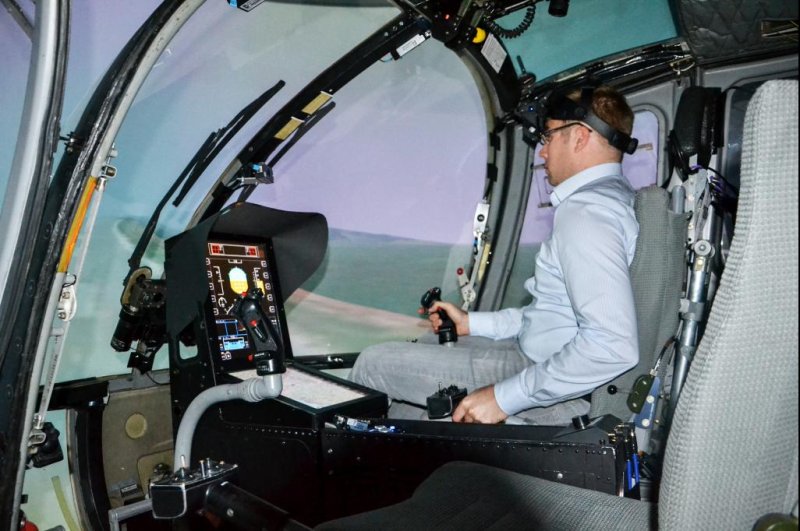1 of 6 | Franz Viertler, an engineer at Technical University of Munich, tries out the new head-mounted augmented reality display in the research simulator. Photo by Technical University of Munich
MUNICH, Germany, June 29 (UPI) -- Pilots must be able to detect hazards as early as possible in order to quickly plot a path around them. In thick fog or clouds, however, this can be difficult.
Researchers at the Technical University of Munich may have a solution for pilots in limited-visibility conditions using an augmented reality system imported to a helmet-mounted display that has been successful in flight simulators.
The system combines terrain information and sensor readings into the display, which can also show speed, altitude and other flight data alongside digitally-generated outlines of the landscape and any obstacles.
For pilots flying rescue helicopters, in addition to mountains or houses, construction equipment, turbines and other structures pose a danger if they cannot be seen and avoided in time. In the augmented reality system, green lines outline mountains and houses, while red outlines show other obstructions, allowing pilots to react.
"The new technology can reduce the risk when helicopters are operated," Franz Viertler, a researcher at the Technical University of Munich, said in a press release. "The main problem is poor visibility caused by clouds or snow, or dust blown up when taking off and landing. Augmented reality can help to overcome this white-out or brown-out phenomenon."
In a presentation at the American Helicopter Society International's 72nd Annual Forum and Technology Display, researchers presented test data gathered in simulators showing the system could be effective.
The researchers recruited 16 professional helicopter pilots to test the system during simulator flights, recording the flights and tracking the pilots' stress during simulation, as well as usability of the system.
Overall, the pilots reported they flew more quickly and felt more safe, in addition to reporting the simulated flights felt less demanding physically and mentally. The greatest benefit of the system, they said, was in visual ranges of 100 to 400 meters.
More testing will be necessary in simulators, but the researchers say the system needs to be tested during actual flights, which may be possible sooner than later as industry has already shown interest.















